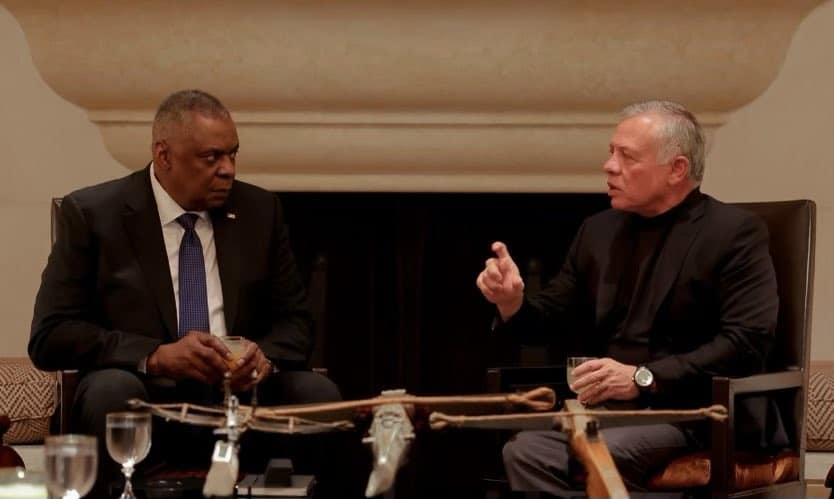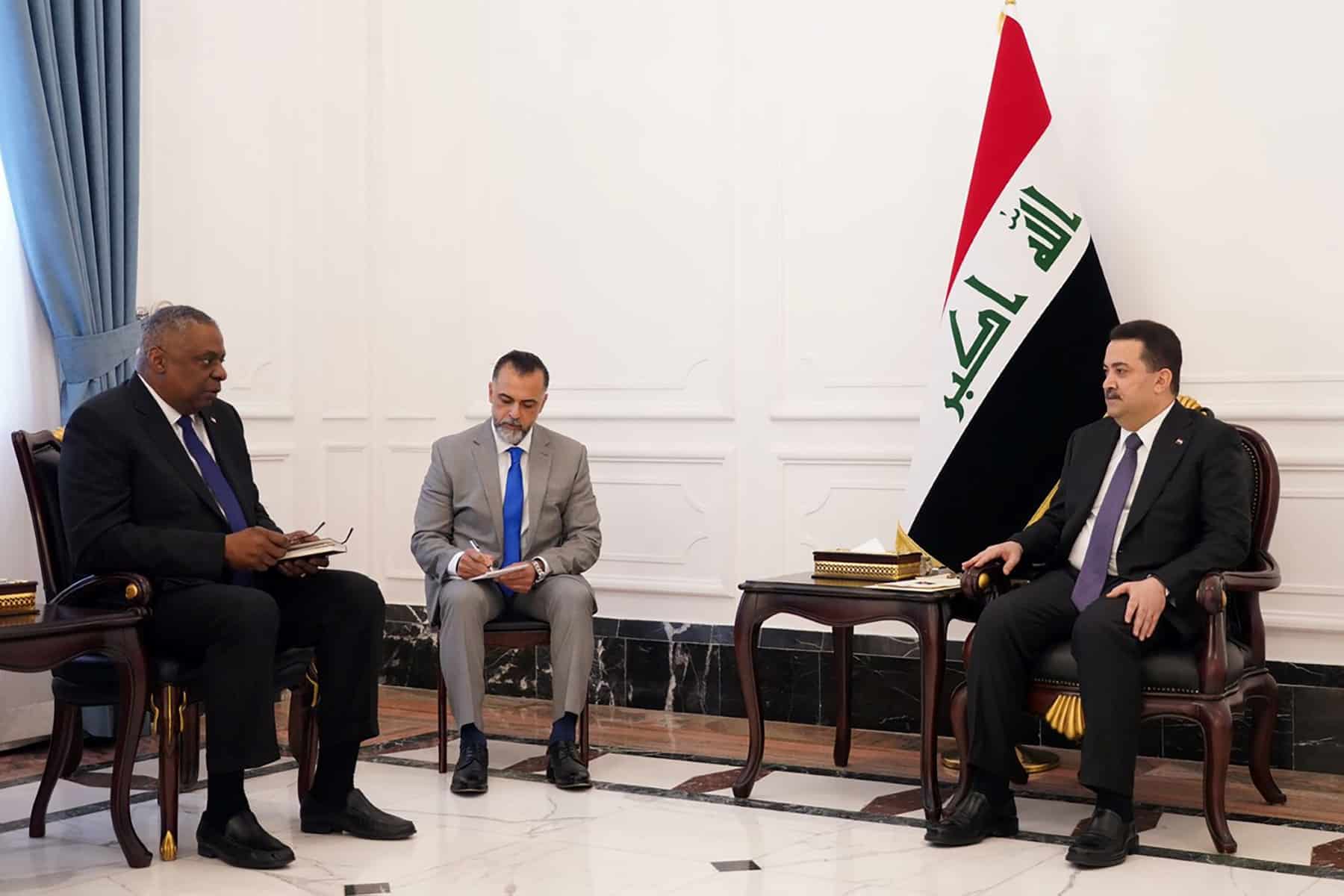Dubai, UAE – On his ongoing visit to Middle East, US Defence Secretary Lloyd Austin broke from his itinerary and made an unannounced visit to Iraq where he assured his hosts of US support for “Iraqi security, stability and sovereignty.” The visit came ahead of the 20th anniversary of the US-led invasion that toppled Saddam Hussein and was the first by a Pentagon chief in these years.
Austin told Iraqi Prime Minister Mohammed Shia al-Sudani that US troops were “ready to remain” in the country at Baghdad’s invitation, an issue that has polarized public opinion in both countries.
The Iraq visit, however, was a slight digression from Austin’s main policy objectives in the region: he was here to shore up US standing and support in view of the growing China-Russia interest and outreach to the Gulf states and also to reassure Arab allies against a rising Iranian threat.
In December last year, President Xi Jinping held a summit meeting with Gulf leaders in Riyadh, including Saudi Arabia’s Crown Prince Mohammed bin Salman.
Austin wrote on Twitter before his departure that he would meet key leaders and “reaffirm the US commitment to regional stability and advancing the shared interests of our allies and partners.”
Pentagon website quoted a senior defense official as saying that the visit was meant to convey “enduring US commitment to the Middle East and provide reassurance to our partners that the United States remains committed to supporting their defense.”
Some areas for collaboration sought to be pursued are “integrated air and missile defense, maritime security, intelligence sharing and early warning systems.”
“This is important not only for the security of the citizens of the region, the territory and the defense of our partners, but also obviously sends a strong strategic signal of our commitment to each other and to regional security and stability,” the official quoted by the US Department of Defense said.
Central to discussion will be the “full constellation of Iran-associated threats..,” a senior defense official was quoted as saying on the Pentagon’s official site ahead of the visit.
“Those threats include Iran’s arming, training and funding of violent proxy groups, aggression at sea, cyber threats, its ballistic missile program and drone attacks,” he added.
In addition, Iran’s deepening ties with Russia have been a source of unease in Washington. Relations with Iran have grown further tense as the two countries have failed to revive 2015 nuclear deal despite sustained diplomatic engagement since Joe Biden’s appointment as US president in January 2021. And recently, the International Atomic Energy Agency detected trace amounts of uranium enriched to nearly 84 percent purity, just shy of weapons-grade levels.
Austin was quick to highlight these threats during his visit to Jordan where he warned of “unthinkable” military ties developing between Russia and Iran.
“What Iran is doing is really unthinkable,” Austin told reporters on Monday in the Jordanian capital Amman. “They’re getting more experience as they employ drones in Ukraine. And that doesn’t bode well for the region.”

He assured his allies that the US was going to be in Middle East “for the long haul” as this was an important region “not only to us but to the world.”
The defence secretary’s trip follows high-profile visits to the region by US national security adviser Jake Sullivan, CIA director Bill Burns and General Mark Milley, chair of the joint chiefs of staff.
The US has 34,000 troops stationed across the Middle East. Egypt, Jordan and Israel are among the largest recipients of US financial assistance.
Over the last few years, regional geopolitics has transformed across Middle East, some would say beyond recognition. Israel has forged diplomatic relations with the United Arab Emirates, Bahrain and Morocco through the so-called Abraham Accords of 2020. Israel has drawn closer to other Gulf powers, including Saudi Arabia over shared concerns about Iran, particularly as Iran steps up its nuclear activities.
Gulf countries have also become chary of waning US influence and role in the region, especially after US military drawdowns in Afghanistan and the Persian Gulf, an impression that the US Defence Secretary seems to have come to dispel.
In Egypt, US Defense Secretary and Egyptian President Abdel Fattah al-Sisi reaffirmed their countries’ close military ties Wednesday, Sisi’s office said.
The US sends over $1 billion a year in direct military aid to Egypt, which has been one of the largest recipients of US assistance since it became the first Arab nation to normalise relations with Israel in 1979.
Earlier in Jordan on the first leg of the visit, Jordan’s King Abdullah and US Defence Secretary Lloyd Austin discussed the expansion of military co-operation between the two countries.

